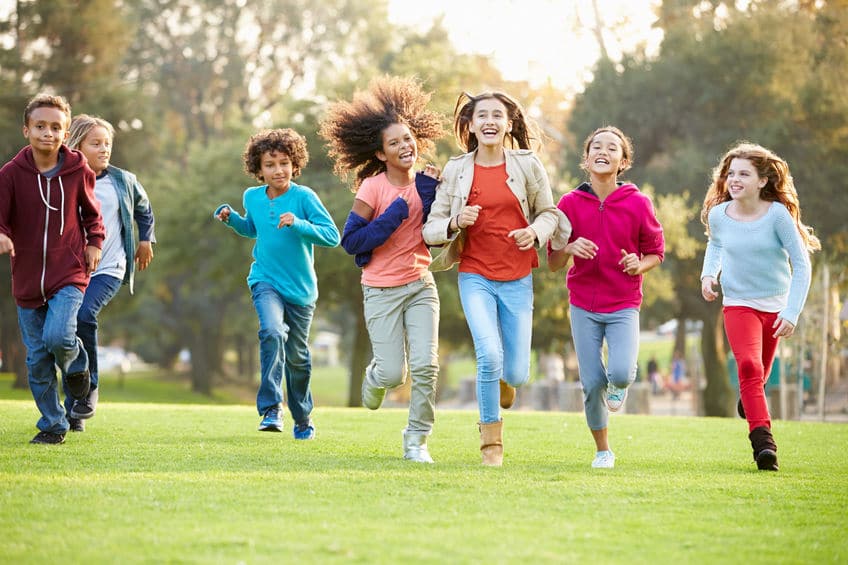
There are many aspects to a child’s overall fitness. A child’s ability to be physically fit is the one we as adults relate to the word fitness. There are other parts of it though. Children need to be socially, emotionally, and academically fit also. When a child is positively fit, they can perform physical activities, learn new skills, build relationships, and communicate with others. Children think of being fit as a fun and enjoyable experience. It is not however commonplace or as easy to achieve as you may think. Everyday issues have a tendency to get in the way. After a long day at school and work families are tired and stressed. That’s when we turn on the television or hook ourselves up to a tablet and check out. While it is understandable it is a habit that we should try to break.
Did you know that children love to do yoga! It is an easy way to stretch and relieve some stress at the end of the day. Having the opportunity to jog around the backyard and do something physical after sitting in school all day gives them a chance to focus and get a release to all their built-up energy. Physical activity helps them to increase their coordination, balance, strength, and their own knowledge of what they can do. Some quick activities to do outside: hopscotch, a round of catch, running races, sidewalk chalk. Just a quick five-minute activity can really make a difference for evening routines.
Being mentally fit is not something most people think about when it comes to children. They are constantly drawn to watching television or playing on the tablet. It can be a good distraction but shouldn’t become a habit It can be very disruptive to communication skills, focus and building relationships. Making time to engage them in conversation and having them participate in daily activities help to ensure they are mentally fit. Ask about their day and tell them about yours. The act of simple conversation will keep their mind alert. It teaches empathy and gives them insight to what others think about. Let them help make dinner. When they participate in making food, they are more likely to want to eat it. It teaches them healthy eating habits. Most importantly it gives them a chance to build a greater relationship with you.
When I think of a child that is fit, I think about the whole child. Think of it as a pie chart. A section for the mind, a section for the body, a section for the heart. The more these areas get filled the healthier the child.
Ms. Dotty
Lead Pre-Kindergarten Teacher
NAEYC Coordinator
 It’s the middle of March, the sun is out past 4 o’clock and you’re most likely rushing to go pick up the kids from preschool. You check your Facebook at the red light and can’t help but see articles about COVID-19 popping up here and there. Another couple seconds of scrolling and you slowly forget about that headline and continue on with your busy night. Your brain is focusing on dinner, hockey practice, getting the kids bathed. You may have even considered washing your hair but then laugh at that cute thought and continue to drive.
It’s the middle of March, the sun is out past 4 o’clock and you’re most likely rushing to go pick up the kids from preschool. You check your Facebook at the red light and can’t help but see articles about COVID-19 popping up here and there. Another couple seconds of scrolling and you slowly forget about that headline and continue on with your busy night. Your brain is focusing on dinner, hockey practice, getting the kids bathed. You may have even considered washing your hair but then laugh at that cute thought and continue to drive.